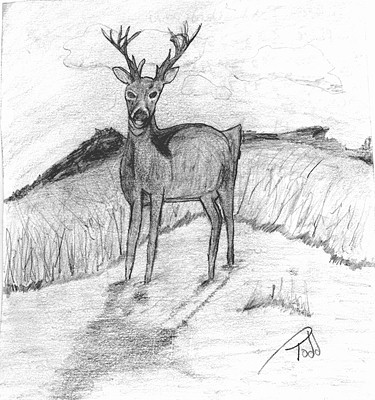All Nonfiction
- Bullying
- Books
- Academic
- Author Interviews
- Celebrity interviews
- College Articles
- College Essays
- Educator of the Year
- Heroes
- Interviews
- Memoir
- Personal Experience
- Sports
- Travel & Culture
All Opinions
- Bullying
- Current Events / Politics
- Discrimination
- Drugs / Alcohol / Smoking
- Entertainment / Celebrities
- Environment
- Love / Relationships
- Movies / Music / TV
- Pop Culture / Trends
- School / College
- Social Issues / Civics
- Spirituality / Religion
- Sports / Hobbies
All Hot Topics
- Bullying
- Community Service
- Environment
- Health
- Letters to the Editor
- Pride & Prejudice
- What Matters
- Back
Summer Guide
- Program Links
- Program Reviews
- Back
College Guide
- College Links
- College Reviews
- College Essays
- College Articles
- Back
Do the Deer Need to Go?
Tuesday, December 3, 1998. The day that would change antique cane collector Hank Taron’s life forever. The day that his wife, Nancy, was killed when a deer was sent over the median on Route 128 and crashed through the windshield of their minivan, killing her instantly (Crittenden). Division of Fish and Wildlife spokesman William Davis said of the deer population, “We’re trying to get ahead of the growth rate” (Crittenden). Attempts to control the deer populations have been unsuccessful. The growing number of deer and human interactions needs to be halted. PA should extend deer hunting season and bag limits into spring, because the deer population is too large and is causing harm to humans and other wildlife.
Deer populations here in Pennsylvania are growing faster than wildfire. Too fast for the humans and wildlife to handle. For example, in a 1990 study, Virginia had almost no deer. In 1999, almost one million deer live in the state of Virginia. Likewise, Pennsylvania was home to 1.2 million deer in 1999 (Mueller). The massive growth of deer is partly due to regulated hunting seasons and the expansion of deer into human’s backyards. Before the people started developing the woods, the deer were alone together. Now they are among people. Pennsylvania law restricts the discharge of any weapon within 150 yards of a residential home without the owner's consent. This forms a “safety zone” for deer, protecting them as they feed and rest. Furthermore, deer harming wildlife can be seen in the edible plants in Pennsylvania’s Allegheny National Forests (ANF). “Much of the ANF is now dominated by black cherry trees, and the forest floor is covered in a thick mat of hay-scented fern.” The massive population of deer have eaten all the other plants, leaving only the ferns behind. “Now, because deer can’t eat them, they’ve come to overwhelm nearly all their natural competitors. The hay-scented fern, for example, once covered less than 3 percent of the forest floor” (Levy). The deer are harming themselves through potential starvation, because as soon as the edible plants are gone, only the inedible plants will remain. Allowing the deer to starve is cruel and goes against most ways of life. Another example of the effect an increased deer population has on humans is the physical pain deer cause to humans. In a study done in 1997, more than 30 million deer lived in the United States (To hunt). In 1995, deer caused more than 500,000 auto accidents. Today that number is over 1 million (To hunt). This statistic means that deer are becoming more used to human interactions. Also, each year, about 30,000 Americans are infected with Lyme disease (How many). Lyme disease causes painful headaches, swollen joints, and aching. The bacteria in Lyme disease comes from deer and is transported from deer to humans by ticks (To hunt). A rising number of cases of Lyme disease grows with the growing number of human-deer interactions.
Some believe that extending the bag limit would cause a drastic decrease in the deer population, or that it wouldn’t allow the deer population to replenish during the non-hunting season. However, most female deer, called does, have twins in the spring (Dewey). Assuming almost every female deer has 2 offspring, the total deer population doubles every year. This means that uncontrolled, 10 deer can quickly become 3840 in as little as 4 years. Due to the white-tailed deer’s repopulation rates being as high as they are, it is possible to extend the bag limits without negatively affecting the deer populations in Pennsylvania.
Pennsylvania should extend the deer hunting season and bag limits into spring to reduce the growing number of deer in western Pennsylvania. The massive deer population is starting to interact with humans and harm the wildlife. This interaction is hurting humans, the environment, as well as causing irreversible problems. The deer need to be dealt with humanely and quickly before more accidents, infections, or deaths happen.

Similar Articles
JOIN THE DISCUSSION
This article has 0 comments.
